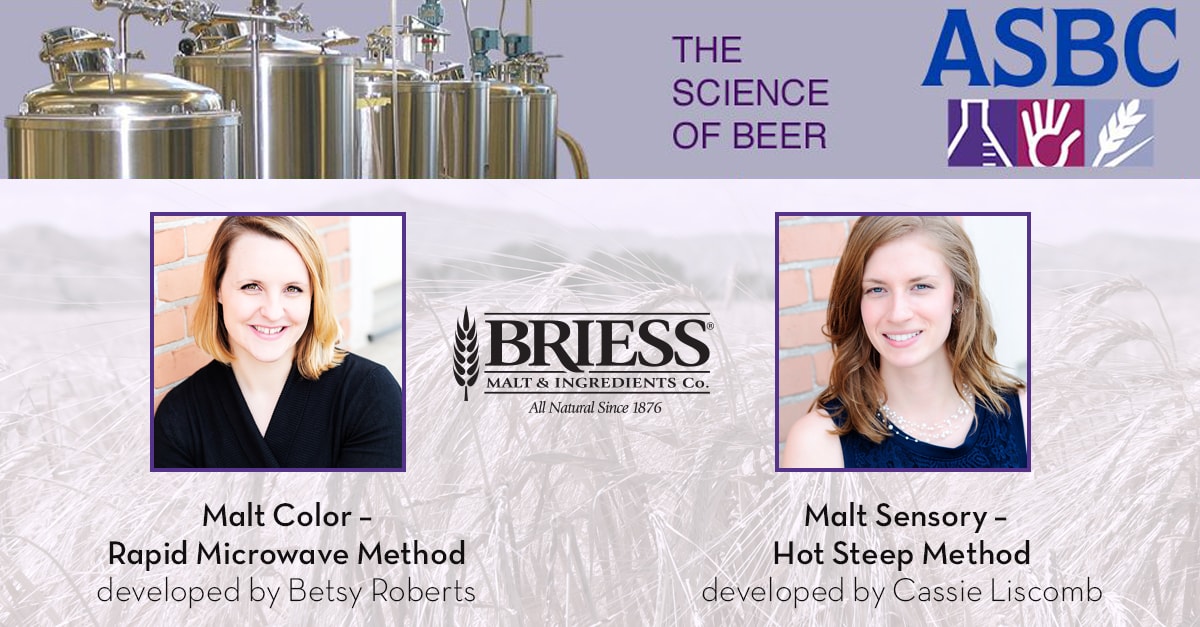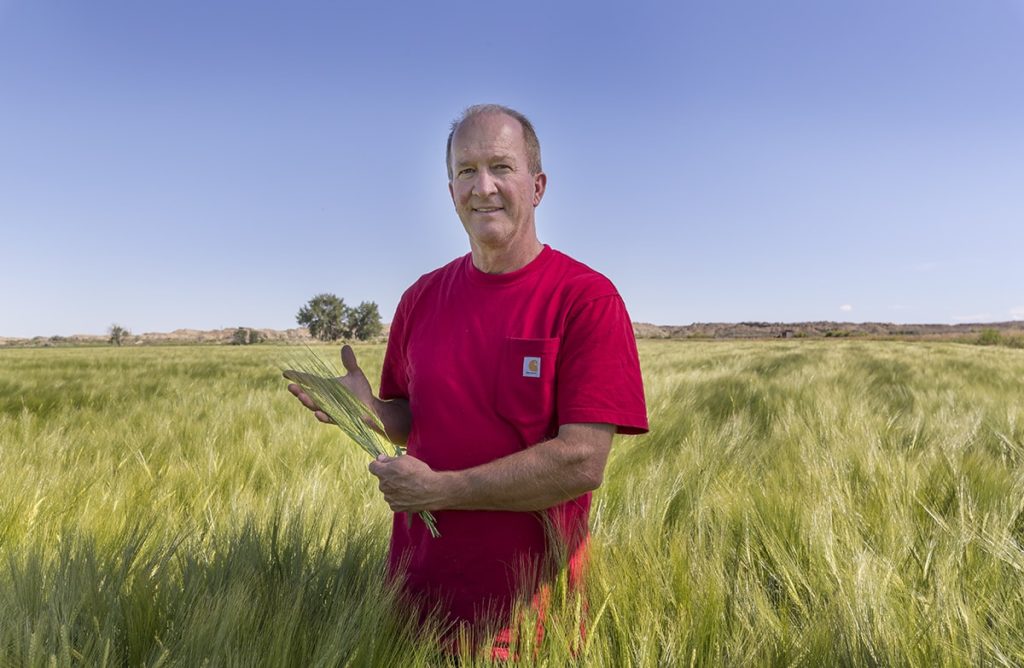
Please extend a thank you to these two women for their dedication and pushing the boundaries in brewing industry science. I am incredibly proud of the work Betsy Roberts and Cassie Liscomb have done to create these affordable and valuable methods and the years of work they have put in to get them approved by the American Society of Brewing Chemist (ASBC).
1) Malt Color – Rapid Microwave Method
A few years ago, Briess looked into the development of an internal method that could be used as an alternative to the Congress Mash method to determine the color of a malt sample. In order for the method to have the ability to be utilized in a range of applications (i.e., receiving areas, during production, breweries) it was created with the intent of being able to avoid purchasing a lot of lab equipment and to utilize materials that may already be on hand. It was also determined that other malting companies were looking into similar methods. On polling the ASBC subcommittee for New and Alternate Methods, it was found that there was an industry wide interest in a method for determination of malt color, which didn’t require use of a traditional mash bath. The desired method would then have the same intent as was developed by Briess, as an alternative to the standard method, Wort-9. The method went through 2 rounds of ring study with 15 collaborators, and was approved by the Technical Committee during the 2016 WBC.

Within the ASBC’s Methods of Analysis, Betsy’s Malt Color – Rapid Microwave Method is the first new malt method in over a decade and represents a significant improvement in the speed, ease and affordability of the existing method. The impact of this is huge for ourselves and the industry when understood within the context of our operations and our customers. For Briess (and other maltsters) this tool has allowed for improvements in internal quality and efficiency as we now have reliable methods that operators can use to make in process and post process adjustment to reduce variability and hit quality targets. Additionally our time to release products to binning, bagging or shipment has been reduced allowing for greater turnaround and operational efficiency. For brewers this method represents a low cost method that they can perform, likely with equipment on hand, to evaluate their raw materials. This makes assessing raw materials for formulating, confirming quality or troubleshooting process variability possible for thousands of brewers who previously lacked the equipment.
2) Hot Steep Malt Sensory Method

Cassie’s method is groundbreaking in that it is the first published ASBC sensory method used to prepare samples to evaluate raw material flavor. Beyond processing considerations, the most important character of a malt is its flavor. However, there has previously not been a repeatable or relevant method for creating worts for sensory analysis to determine a malts possible contribution to wort and beer flavor for all malt types. This opens up a whole new world to brewers who will now have an easy, affordable method of determining the extractable flavors from malt that will influence the flavor of their finished beer. Product formulation, quality assurance and quality control in breweries and specialty malthouses alike will be aided by this method.


